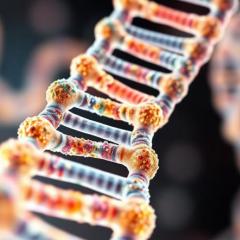The vision to create an Australian-first home for medical research, clinical trials and treatment commercialisation reached an historic milestone today with the official start of construction on the $354 million Translational Research Institute in Brisbane.
Professor Ian Frazer, director of The University of Queensland Diamantina Institute — one of the four research partners collaborating on the project — said the TRI would be home to world-leading researchers focused on translating scientific knowledge into practical benefits for the community.
“The goal is better health for all, through collaboration between health care professionals and research scientists,” he said.
“For me personally, this project is the practical realisation of a dream for a building dedicated to clinical and translational research on this site, a dream that has been with me since I came to Queensland 25 years ago.”
Professor Frazer said dedicated medical researchers, rather than a building, would solve the problems of chronic disease.
“However, this new building will greatly facilitate the work of those dedicated researchers,” he said.
“It will provide two components critical to the researchers’ work. The first is the latest and best in research technology – the wherewithal, if you like, to explore more deeply into the science of health and disease.
“The second is an environment that encourages team effort across disciplines. This will not merely allow, but will positively encourage, a focus on applying basic knowledge to achieve the practical outcomes of disease prevention and control.
“To these ends, this building will be equipped with the state-of-the-art research facilities.
“Critically, and uniquely within the Southern Hemisphere, it will also include the necessary facilities to manufacture and to evaluate the clinical benefit of the products of our medical research.”
At today's ceremony, Queensland Premier Anna Bligh said the TRI would be the largest institute of its kind in the Southern Hemisphere, and one of just a handful of similar institutes in the world. It would cover five floors and provide 32,000sq m of research space.
TRI Chairman Dr David Watson said the world-class facility — due for completion in May 2012 — would place Queensland at the forefront of medical research developments worth billions of dollars.
The TRI would be a key platform in assisting Australian medical scientists to keep greater control of breakthrough drugs such as Professor Frazer's cervical cancer vaccine, instead of it being necessary for them to sign away the rights to global pharmaceutical companies early in the development process.
The research for Professor Frazer’s vaccine — sold worldwide under the brand names Gardasil and Cervarix — all took place in Queensland. If the TRI and its manufacturing capabilities had been established at that time, much more of the economic benefits from its $5 billion-plus of worldwide sales would have returned to the State.
“When completed, TRI will allow certain medical treatments and medications to be developed and manufactured in the one location,” Dr Watson said.
“Until now, funding and facilities to commercialise medical treatments have largely been sourced from overseas, resulting in other countries benefiting economically from Australia’s pioneering research and development, with Professor Frazer’s cervical cancer vaccine being a prime example.
“TRI will revolutionise this process by being able to actively reinvest money into the industry, creating more research jobs and taking the medical research and manufacturing field into a sphere never dreamed of before – ultimately resulting in better health care solutions for all Australians,” Dr Watson said.
The TRI will accommodate up to 600 researchers from the four TRI partners: the University of Queensland, Queensland University of Technology, Mater Medical Research Institute and the Princess Alexandra Hospital.
TRI will combine academic medicine and translational research with the goal of minimising time between a laboratory discovery and its effective application in the clinic and the community.
In 2013, medical treatment manufacturer DSM Biologics will move into the biopharmaceutical manufacturing facility adjoining the TRI building to provide the institute’s commercialisation and manufacturing arm.
The University of Queensland Diamantina Institute was established in 2007. Under the direction of Professor Frazer, it seeks to discover the cellular and molecular basis of diseases in an effort to better understand how diseases are formed, and to develop preventative measures.
The TRI’s $354 million in funding includes $140 million from the Australian Government, $107 million from the Queensland Government, $50 million from The Atlantic Philanthropies, $25 million from QUT, $10 million from UQ and $10 million from the Australian Government for biopharmaceutical manufacturing.
Media: Fiona Cameron, UQ Communications, ph +61 7 3346 7086



